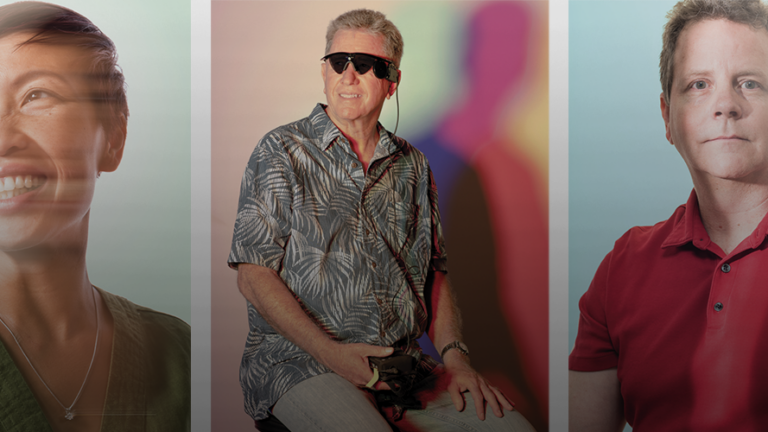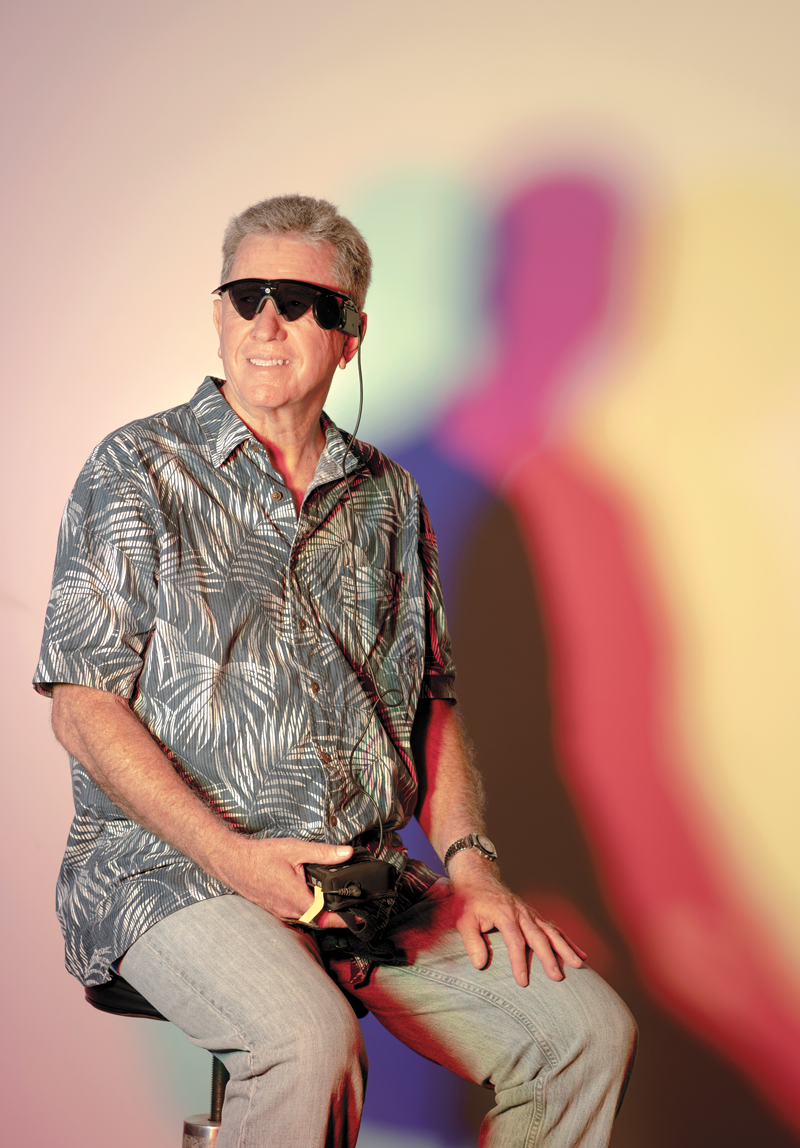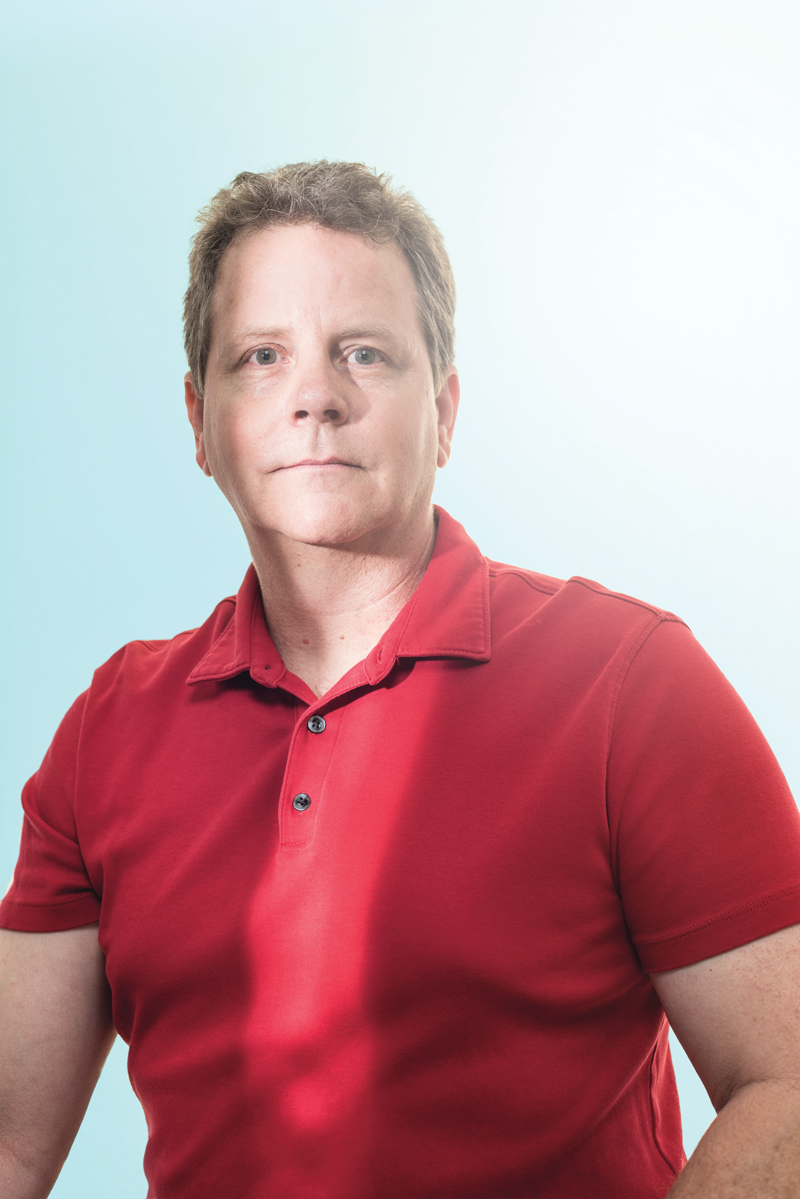
Facing Serious Medical Conditions, Three Patients Get New Life
Seeking treatment at Keck Medicine of USC put these patients in the right place at the right time.
Kathy Nguyen dropped to the ground, unconscious.
She was a healthy, 40-year-old marathon runner — so when she fell ill at a family brunch during a visit to Los Angeles, none of her relatives or friends could’ve imagined she had suffered a ruptured brain aneurysm.

Nguyen was rushed to a local hospital, where the medical staff identified that she had blood in her brain. Yet they couldn’t trace the source.
Unfortunately for Nguyen, she had been struck by a type of aneurysm so rare that most hospitals can’t identify it, much less treat it. Her doctors knew that Nguyen was in peril but they didn’t know if she ever would return to her former self, or even survive.
“It was not looking good, and my family thought I might never wake up,” says Nguyen, a resident of Newark, Delaware and mother of two young children. Nguyen’s doctors and her husband, Robby Alvarez, weren’t ready to give up. Her doctors contacted several nearby hospitals, hoping that one of them might have some kind of treatment to improve her chances of survival.
Two days later, still in a coma, Nguyen was transferred to Keck Hospital of USC. The doctors at Keck Medicine of USC’s Comprehensive Stroke and Cerebrovascular Center specialize in diagnosing and treating rare and complex aneurysms. “We take on the most challenging cerebrovascular cases and come up with solutions, with the goal of getting people back to what they love to do,” says Jonathan Russin, assistant professor of clinical neurological surgery and director of cerebrovascular surgery.
Keck Medicine’s William Mack, professor of neurological surgery, reviewed Nguyen’s CT scan and instantly recognized the unusual aneurysm. She needed a type of bypass surgery that only a few medical centers in the country can perform. Russin took the lead for Nguyen’s delicate procedure at Keck Hospital, carefully connecting two small vessels in her brain to allow blood flow to her brainstem, while preventing more bleeding from the aneurysm.
When Nguyen awoke from her coma, she didn’t realize what had happened. She also didn’t know that she had survived because she was in one of the country’s leading academic medical centers.
Academic medical centers take the lead
The specialized knowledge of physicians like Russin is part of what sets academic medical centers apart from other hospitals. Drawing on the combined resources of a hospital, medical school and research university, academic medical centers advance the practice of medicine.
Fewer than 3 percent of all hospitals in the U.S. are academic medical centers. Though small in number, their impact is felt globally. It’s no coincidence that many academic medical centers are also among the top-rated hospitals in the country. Because they are associated with medical schools, these enterprises also push the spread of innovative medicine by training the next generation of doctors in the latest research and technology.

Patients benefit by seeing top-level physicians who are building and sharing knowledge and who have access to leading edge devices, equipment and therapies. Terry Byland is just one of many patients who have benefited from a pioneering collaboration between physicians and researchers.
The world went dark for Byland at age 45 when retinitis pigmentosa left him completely blind. Retinitis pigmentosa is a rare eye disease in which light-sensing cells in the retina die. About 10 years later, a friend who was being treated at Keck Medicine heard about a clinical trial launched by Mark Humayun, University Professor of Ophthalmology, director of the USC Ginsburg Institute for Biomedical Therapeutics and co-director of the USC Roski Eye Institute. Humayun was testing a new device that might help restore limited vision to certain blind patients.
Byland become one of the first recipients of the Argus I retinal prosthesis in 2004, when Humayun and his team implanted it in one eye. In 2015, the next generation of the device, Argus II, was placed in his other eye, making him the first person in the world to have two retinal prostheses.
The Argus setup consists of a small camera mounted on eyeglasses, which sends images into a video processing unit that transforms them into wirelessly transmitted electronic signals. These signals are delivered to an implanted retinal prosthesis, which in turn sends electrical pulses to the remaining neurons in the otherwise blind eye. These electrical pulses are important because they trigger neuron pulses that travel through the optic nerve to the brain, allowing it to interpret the signals and create a sense of vision.
The complex research that went into developing Argus I and II involved decades of collaboration with professors from several departments across USC, as well as partners from other universities and a private company, Second Sight Medical Products, Inc.
“To build a device like this you need a team with expertise in electrical engineering, materials science, physics, physiology, neuroanatomy, ophthalmology and surgery,” notes Humayun, who has joint appointments at the Keck School of Medicine and the USC Viterbi School of Engineering. “This truly required interdisciplinary convergence, and an excellent place for such a collaboration is at a university like USC.”
Because academic medical centers specialize in creating and advancing new medical knowledge, they’re hotbeds for offering unique clinical trials. These early and late-stage clinical studies evaluate devices like the Argus before they’re approved by the FDA and available to the general public. This gives patients like Byland early access to cutting-edge treatments. In turn, patients like Byland participate in research that provides vital information to physicians and scientists, enabling the researchers to improve technology for future patients.
To build a device like this, you need a team with expertise in electrical engineering, materials science, physics, physiology, neuroanatomy, ophthalmology and surgery. This truly required interdisciplinary convergence, and an excellent place for such a collaboration is at a university like USC.
Mark Humayun
Today, Byland is able to do things he never thought possible 15 years ago. He takes walks around his neighborhood in Riverside, California, and, with the help of the Argus II, he can identify obstacles like parked cars that at one point would have stopped him in his tracks. Regaining some of his independence and being able to see more than he used to has been a life-changing experience, he says.
“I owe Dr. Humayun and the people at USC so much, and I just can’t tell you how much this has meant,” Byland says. “The future is bright and I know that is absolutely true because of this experience I have had.”
The heart of the matter
On the day that he collapsed with a searing pain in his chest, Romney Mawhorter ’88 of Diamond Bar, California, was hoping to have a relaxing weekend away with his wife on Catalina Island. Instead, he got an unexpected trip to the emergency room.
When Mawhorter first arrived in the island’s sole emergency care center, the doctor on call knew her patient was in crisis, but she was unsure what was wrong. She called the USC Comprehensive Aortic Center’s hotline for help with a diagnosis and performed a CT scan that revealed that Mawhorter had suffered a severe aortic dissection, or a tear in the body’s main artery. About half of all patients with aortic dissections die within six hours, so quick treatment was critical. A helicopter rushed him to Keck Hospital for emergency surgery.

Aortic dissections are fairly uncommon, and most community hospitals won’t recognize them instantly, explains Fernando Fleischman, associate professor of clinical surgery and co-director of the USC Comprehensive Aortic Center. Even for those that do, most are ill-equipped to treat it.
“Most community hospitals don’t have cardiac surgeons with the necessary experience to operate on patients with aortic dissections,” Fleischman says. That’s one of the reasons why Keck Medicine established its hotline and an emergency transport system to get patients with aortic dissections to Keck Hospital while they have a shot at survival.
Keck Medicine’s staff is experienced in performing the long, complex operation to repair an aortic dissection. The high-risk procedure involves securing a graft to repair the damaged section of the aorta and testing whether it will hold when pressurized. Many hospitals, notes Fleischman, may see one or two aortic dissections in a year, but Keck Medicine took in about 230 patients with this condition in 2017. More than 90 percent of the center’s aortic dissection patients survive — a much higher rate than at the average hospital.
Mawhorter’s dissection was severe, with damaged tissue ning from his leg to his heart, but when he arrived, the Keck Medicine team was ready and he was wheeled into an operating room.
“I’m pretty lucky to be alive,” Mawhorter says. “Dr. Fleischman told the team he was going to keep trying until he ran out of time, and it finally took.”
Almost four years later, the former USC Trojan track and field standout (Mawhorter ran the second-fastest time in USC history in the 3,000-meter steeplechase) still takes medication to control his blood pressure and sees Fleischman for check-ups. With his surgery behind him, he now focuses his attention on his new job, working out and enjoying time with his family and friends.
“I’m just happy to still be here,” he says.
Full speed ahead
Since Kathy Nguyen suffered her brain aneurysm in 2015, she has come to appreciate and enjoy life. Once she had recovered, one of her first concerns was whether she would be able to run again. She had made it through her recovery without any major physical setbacks, though Russin points out that if she hadn’t undergone the complex bypass, she would likely have suffered significant disability. Determined to make the most of her second chance, Nguyen managed to get back to running in only two months. She then set her sights on a bigger goal: run the L.A. Marathon within a year.
In 2016, Nguyen crossed the finish line, and she did it with the support of her family and her health care team. Her own Keck Medicine surgeon and other medical staff members finished the marathon alongside her, and she now uses the race as a way to raise money for research at the USC Stroke Center. She plans to run the L.A. Marathon every year to raise money to help others until she is no longer able to run.
“I just feel so lucky that I got out of this,” says Nguyen, who has since quit her job to become a full-time running coach. “And I want to give back.”



